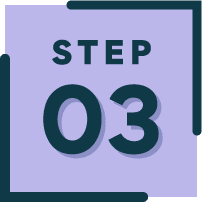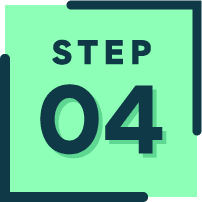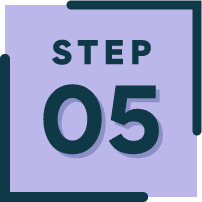What is staircasing?
Mortgage staircasing is where those who are in a shared ownership mortgage have the opportunity to purchase a bigger share of their property.
For example, if you buy 50% of a property through a shared ownership mortgage, over time you can increase the share that you own in your property until you own 100% of the property.
By purchasing a bigger share of your home, you will reduce the amount of rent that you are paying, although it is likely to increase the monthly mortgage repayments that you are making.

What are the pros and cons of staircasing shared ownership mortgages?
There are several considerations when you are looking for a shared ownership mortgage or intending to use the `staircasing` process.
Below we have highlighted some of the most important factors to keep in mind before going ahead with a shared ownership mortgage.
Shared ownership can be a great way to get on the housing ladder without having to put down the full deposit required by other mortgage types.
Later down the line, staircasing then enables you to buy an increasingly larger proportion of your property, potentially up to full ownership of 100%. You can then sell your property whenever you want and potentially benefit from any house price rises.
Another benefit of having 100% ownership is that you can then move away from a shared ownership product and access more competitive deals. For example, you could obtain a fixed-rate or even an interest-only product, giving you more flexibility.
The price of shares in your home will be in line with the value of the property. Therefore, if the value of your home increases, so will the price of your shares when you are looking to purchase.
That’s why looking to increase the number of shares you own can be crucial and save you money in the long run.
Another drawback is that there are further associated fees and costs every time you want to staircase. This includes legal and valuation fees, as your property will need to be valued to determine the exact percentage you will own.
One final drawback is that many lenders have restrictions on how often you can staircase. Therefore, you may not always be able to increase the number of shares you own as quickly as you’d like.
Important: Buildings insurance covers the cost of rebuilding, not the home’s current market value, while contents insurance covers the replacement cost of your items, which may be more than you expect when tallied up.
How much does it cost to staircase a shared ownership property?
As everyone’s situation is different, we can’t give you an exact price on how much you may end up spending. However, we can highlight some of the costs involved with the process that should be kept in mind.
- Valuation Fees - A professional valuation is typically required to determine the current market value of the property. This can help a lender understand how much of the property you will own after staircasing.
- Legal Fees - You'll need to pay legal fees to amend the shared ownership agreement, certain lenders may have legal teams they work with, meaning you might not have to search yourself.
- Stamp Duty - Depending on the size of the share you purchase and the property's value, you may need to pay stamp duty.
- Mortgage arrangement fees - If your mortgage needs to be rearranged to accommodate the increased share, there may be associated fees incurred by your lender.
Setting up a budget to work within before starting the staircasing process can prove essential. If you’re unsure of how much you might need, why not reach out?
Our expert team of advisors can discuss your situation and run over the potential costs.
How does staircasing a mortgage work?
The process of buying a larger proportion of your property is a relatively simple one.
Step by Step

Initial steps
Firstly, you should contact your landlord, the entity which owns the other proportion of your property – this is usually a housebuilder or housing association. You will need to let them know that you are looking to increase your ownership of your home.
Contacting a mortgage broker can prove key too, as they will be able to deal with the complexities of the mortgage.
Step 1
Raising funds to staircase
You will also need to have raised funds to be able to buy the extra portion of your home. There are generally two ways people do this:
- A further advance – your mortgage lender might be willing to offer you a further advance. They will usually value your home to make sure that there is enough equity in it – which you may well have to pay for, as well as showing proof of earnings which will satisfy them that you can afford the repayments.
- Remortgaging – you might want to consider remortgaging to borrow the extra money for staircasing. Here, you can apply for a bigger loan on which you will use effectively to pay off the old one and buy the new part of your home.
You can also raise these funds by yourself if this is through personal savings or investment returns.
Step 2
Calculating the purchase price & valuation
To ascertain the amount that you will be required to pay to purchase any additional share of your home, you will need to have a qualified surveyor conduct a valuation. The up-to-date value will then be used to calculate the price you will need to pay.
Once the property value is determined, you will then need to pay the difference between the current value of your share and the value of the new share.
Step 3
Mortgage re-arrangement
To accommodate the increased share you will now own, your mortgage will need to be re-arranged. This can involve a new agreement and potentially a new interest rate or new terms.
Like with any new mortgage, the lender will need to reassess you and determine if they think you are able to meet these new repayments. This is especially crucial as it’s likely the mortgage payments will increase as your ownership of the property has increased.
If accepted by the lender, the legal work can begin to amend the shared ownership agreement.
Step 4
Completing the purchase
Once all the necessary work has been completed, you will then officially become the owner of the new share amount. Your rent payments to your shared ownership provider will decrease.
Step 5
Are there restrictions on how much you can staircase?
Understanding all the terms of your agreement is essential when undertaking a shared ownership mortgage.
In certain cases, there can be restrictions imposed, like a cap on how much property you can own. This is typically 80% or 90% of the property value. There are some reasons why a provider may do this:
- Risk Management: By limiting the maximum shareholding, providers can manage their risk exposure. If a shared owner defaults on their mortgage, the provider's financial loss is limited because they still retain a significant stake in the property.
- Ensuring Continued Affordability: By maintaining a provider's stake in the property, the provider can help ensure that the property remains affordable for future shared owners. If the property were to be sold on the open market, the price might increase significantly, making it less affordable for subsequent buyers.
- Community Benefits: Some providers may have a mandate to provide affordable housing within specific communities. Limiting the maximum shareholding can help ensure that the property remains affordable for people in those communities.
You used to be able to only staircase three times, however, recent changes to policies mean there is no longer a limit on how many times you can staircase.
However, before going ahead with a policy, it’s a good idea to speak to your provider and discuss your agreement to understand if they have any restrictions.


